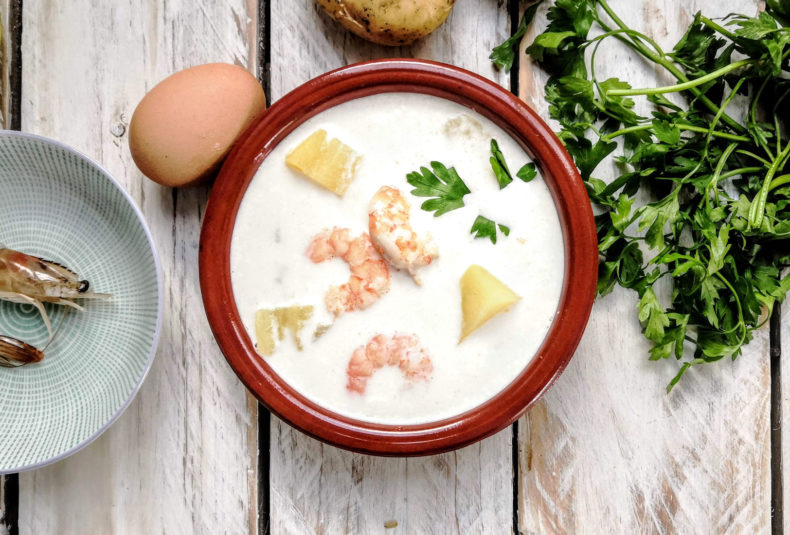Gazpachuelo – white fish soup

Ingredientes
If this soup does not convince you about the originality of malagan cuisine, then nothing will. The recipe has both its coastal and inland variation but it is the fish and seafood version which is the most popular. Gazpachuelo is basically a mayonnaise diluted with a strong fish and seafood broth. In the inland villages, slices of old bread and egg whites are added.
The final flavour is mild with interesting acid edges coming from the lemon in the mayonnaise. It takes a little bit of skill to prepare it but if you follow the recipe you will definitely manage to do it right.
Instructions
In a saucepan simmer 1 litre of water with salt, the shells of the prawns and the rest of the fish (bones and head) for 15 minutes to get a fish broth.
Strain and keep the broth, return it to a saucepan, heat it to simmer and cook in it small pieces of potatoes (the potatoes shouldn’t be clearly cut but partially manually broken or torn).
Once the potatoes are edible, add the peeled prawns and the fish and let simmer for 2 minutes.
Make the mayonnaise in a separate bowl. Stir in the egg yolks drop by drop the olive oil until you achieve the right mayonnaise texture. There is no need to stir too vigorously, a quite regular movement is sufficient. It is important not to give too much oil at the beginning when the texture is the most fragile. Always make sure that all the oil is well connected with the yolk. After the emulsion has the right texture, add a tea spoon of lemon juice.
Now take 200 ml of the soup and move it to a separate bowl. Let it cool a little bit (if it’s piping hot the mayonnaise would not mix with it well – 60°C is cold enough) and add it spoon by spoon to the mayonnaise and mix it always completely with it so that you first get a cream and then a nice smooth silky soup.
Pour the diluted mayonnaise to the rest of the soup and bring to simmer while stirring constantly.
Curiosity
Gazpachuelo was popularly known as the soup of the dead because in the past, actually not so long ago, the person who died was watched by it relatives during the following day and night and they were usually given gazpachuelo to endure the long duty.


